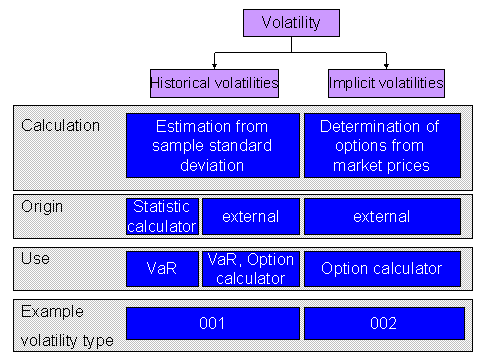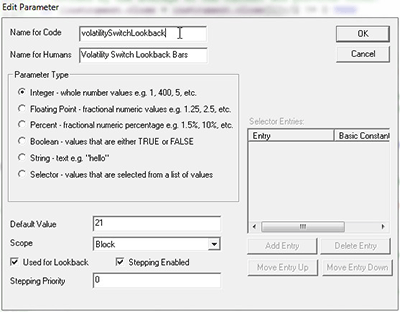Volatility Definition and Types
Post on: 9 Июнь, 2015 No Comment

Definition: Volatility is the pace at which prices move higher or lower, and how wildly they swing. These can be prices of just about anything. However, volatility has been most exhaustively studied, measured and described in the stock market .
Price Volatility
In general, price volatility can be caused by factors that produce wild swings in demand and supply. One of these factors is seasonality. For example, resort hotel room prices rise in the winter, when people want to get away from the snow, and fall in the summer, when vacationers are content to travel nearby. This is an example of changes in demand.
Another factor affecting price volatility is the weather. Agricultural prices depend on the supply, which itself depends on the weather being favorable to bountiful crops.
A third factor is emotion. Price volatility of commodities can be aggravated by the worried expectations of commodities traders. For example, in February 2012, the U.S and Europe threatened sanctions against Iran for developing weapons-grade uranium. In retaliation, Iran threatened to close the Straits of Hormuz, restricting oil supply. Even though the supply of oil did not change, traders bid up the price of oil to nearly $110 in March. By June, they bid down the oil price to $80 a barrel on fears of slowing growth in China. For more, see Why Gas Prices Are So High .
Stock Volatility
Investors have developed a measurement of stock volatility called beta. This will tell you how well the stock price is correlated with the S&P 500 Index. If it moves perfectly along with the Index, the beta will be 1.0. Stocks with betas that are higher than 1.0 are more volatile than the S&P 500, while stocks with a beta less than 1.0 are not as volatile.
Historical Volatility
As its name suggests, historical volatility is how much volatility a stock has had over the past 12 months. If the stock price varied widely in the past year, it is more volatile and riskier. This means it’s worth less than a less volatile stock, because you might have to hold onto it for a long time before the price returns to where you can sell it for a profit. Of course, if you study the chart and can tell it’s at a low point, you might get lucky and be able to sell it when it gets high again. That’s called timing the market, and works great when it works. Unfortunately, with a highly volatile stock, it could also go much lower for a long time before it goes up again. You just don’t know because it’s unpredictable.
Implied Volatility
Implied volatility describes how much volatility that options traders think the stock will have in the future. You can tell what the implied volatility of a stock is by looking at how much the futures options prices vary. If the options prices start to rise, that means implied volatility is increasing, all other things being equal.

How can you use this knowledge to your advantage? Buy an option on a stock if you think it will get more volatile. If you’re right, the price of the option will increase, and you can sell it for a profit. Sell an option if you think it will get less volatile. (Source: OptionsPlaybook.com, What Is Volatility? )
Market Volatility
Market volatility refers to the velocity of price changes for any market, including commodities, forex and the stock market. Increased volatility of the stock market is usually a sign that a market top or market bottom is at hand. That’s because you have a lot of uncertainty, meaning that bullish traders will bid up prices on a good news day, while bearish traders and short-sellers will drive prices down on bad news.
Volatility in the stock market is measured by the Volatility Index or VIX. It describes the implied volatility of the S&P 500, using stock index option prices. It was created by the CBOE (Chicago Board Options Exchange) in 1993, and is used to gauge investor sentiment. (Source: CBOE, Intro to the VIX )
The VIX is informally referred to as the fear index. Usually when the VIX is high, stock prices fall. Very often oil prices will also drop, as investors are afraid that global growth will slow. Traders searching for a safe haven will usually bid up gold and Treasury notes, sending interest rates down. Article updated June 26, 2014
Also Known As: beta, risk, relative volatility, implied volatility














